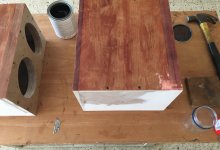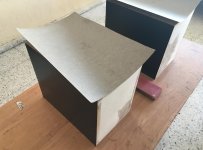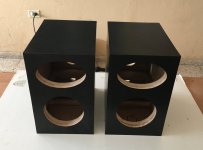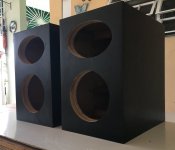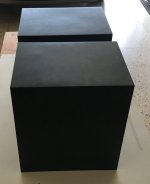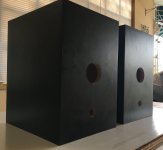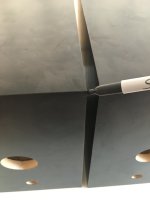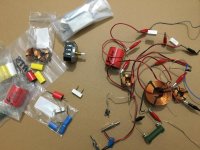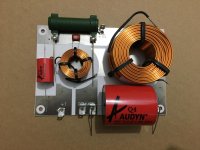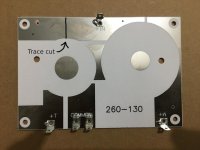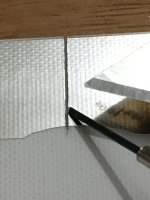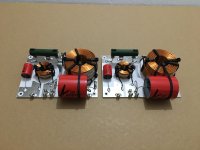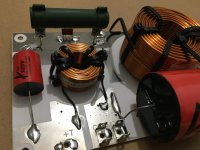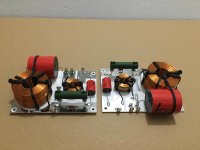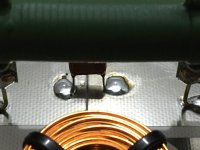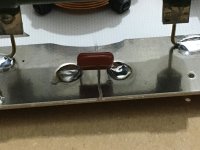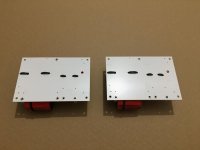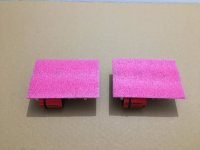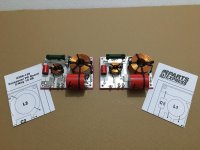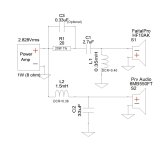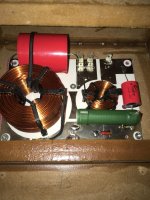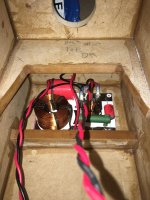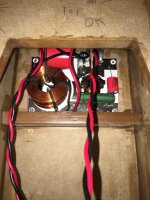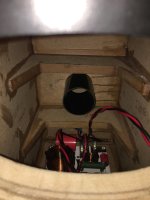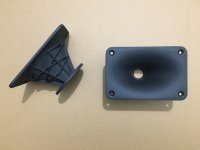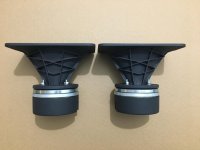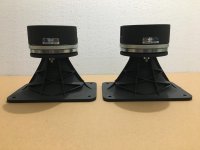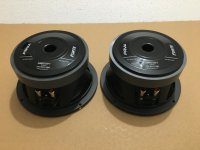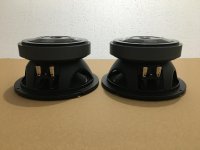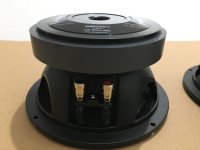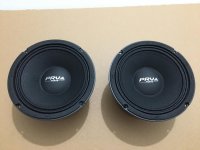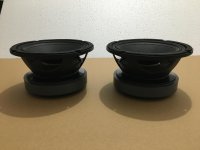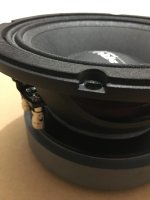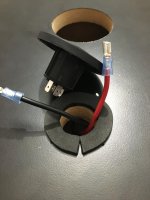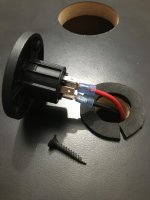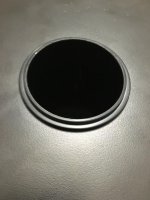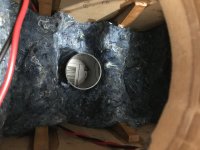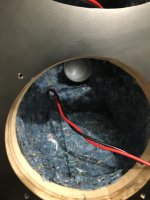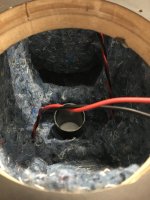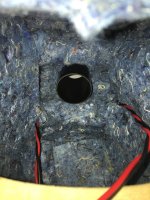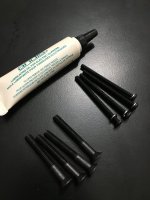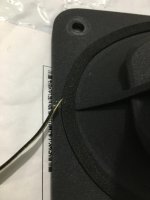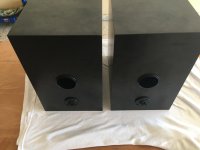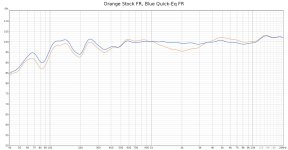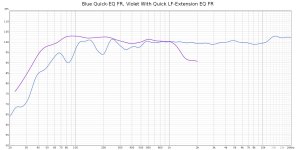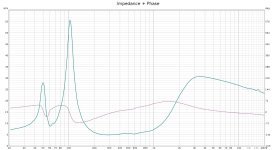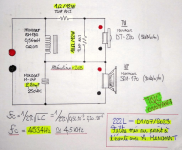Hello, it been some time I haven't build new speakers besides some amplifiers modifications and maintenance, but this time I've build new 6.5" bookshelf speakers, the original project thread started here.
This bookshelf speakers are primarily intended to be driven from a small amplifier/AV(passive) and for when I'm in the mod of listening at low/lean volume levels but not limited to.
The vented box consist of ~15mm(5/8") MDF construction with double(~30mm) baffle sandwich and minimal bracing to conserve some internal air volume space, the outer dimensions are as follow:
8.62"(219mm)Wide x 13.62"(346mm)Height x 12.12"(308mm)Deep, with about ~0.570 cuft gross, used WinISD for the box simulation.
Since this is the first time I've built a pair of bookshelf speakers for efficiency dynamics and clarity, I made few errors while building the boxes but already corrected, also after playing around with drivers options and crossover(active and passive) setups, the drivers of choice were the FaitalPro HF10AK with STH100 for the tweeters and the PRV 6MB550FT midbass.
Also while I'm a diehard Active Crossover All The Way , this time opted for a simple/minimalist 12dB crossover in regards the initial speaker intended use, also the crossover was tuned slightly V-shape on purpose/personal taste with few dB's recessed mids, and of course the passive crossover build was hugely simplified thanks to XSim, VituixCAD and REW software so kudos to their developers.
, this time opted for a simple/minimalist 12dB crossover in regards the initial speaker intended use, also the crossover was tuned slightly V-shape on purpose/personal taste with few dB's recessed mids, and of course the passive crossover build was hugely simplified thanks to XSim, VituixCAD and REW software so kudos to their developers.
I've started testing/listening the bookshelf speakers with the 12dB active(DriveRack PA2) and the passive(Current) crossover for comparison/measurements and frankly the difference were so negligible that they will remains passive, though that's what they were intended for, so I've connected them to a small 20WPC chip amp(Symetrix 420) and the little speakers almost drives me out the room, then I've pushed them a bit with my modified Samson S500(with 40Hz/LR4 highpass xover) and the little speakers does scream with huge dynamics without distortion that they really made me smiley though this are just pure speculations.
PS I will split the post in few sections to avoid an initial big post.
Here are the bookshelf boxes build images:
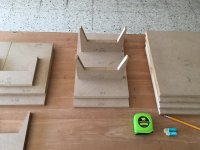
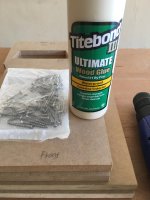
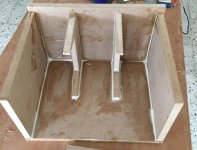
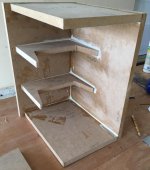
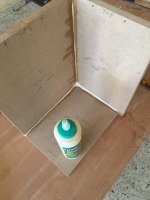
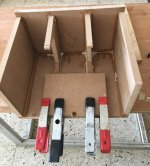
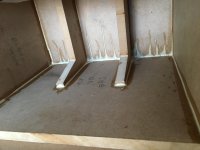
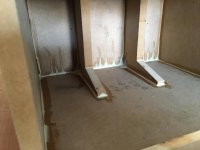
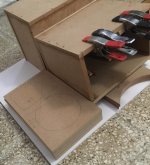
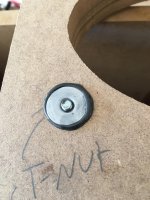
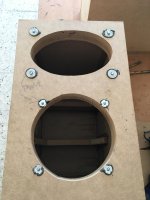
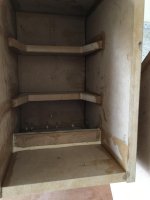
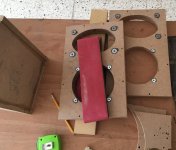
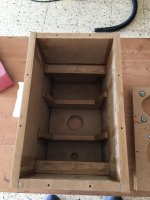
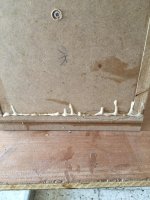
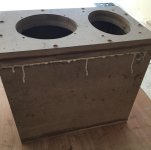
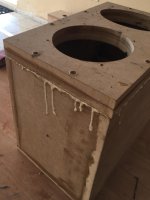
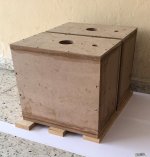
This bookshelf speakers are primarily intended to be driven from a small amplifier/AV(passive) and for when I'm in the mod of listening at low/lean volume levels but not limited to.

The vented box consist of ~15mm(5/8") MDF construction with double(~30mm) baffle sandwich and minimal bracing to conserve some internal air volume space, the outer dimensions are as follow:
8.62"(219mm)Wide x 13.62"(346mm)Height x 12.12"(308mm)Deep, with about ~0.570 cuft gross, used WinISD for the box simulation.
Since this is the first time I've built a pair of bookshelf speakers for efficiency dynamics and clarity, I made few errors while building the boxes but already corrected, also after playing around with drivers options and crossover(active and passive) setups, the drivers of choice were the FaitalPro HF10AK with STH100 for the tweeters and the PRV 6MB550FT midbass.
Also while I'm a diehard Active Crossover All The Way
 , this time opted for a simple/minimalist 12dB crossover in regards the initial speaker intended use, also the crossover was tuned slightly V-shape on purpose/personal taste with few dB's recessed mids, and of course the passive crossover build was hugely simplified thanks to XSim, VituixCAD and REW software so kudos to their developers.
, this time opted for a simple/minimalist 12dB crossover in regards the initial speaker intended use, also the crossover was tuned slightly V-shape on purpose/personal taste with few dB's recessed mids, and of course the passive crossover build was hugely simplified thanks to XSim, VituixCAD and REW software so kudos to their developers.I've started testing/listening the bookshelf speakers with the 12dB active(DriveRack PA2) and the passive(Current) crossover for comparison/measurements and frankly the difference were so negligible that they will remains passive, though that's what they were intended for, so I've connected them to a small 20WPC chip amp(Symetrix 420) and the little speakers almost drives me out the room, then I've pushed them a bit with my modified Samson S500(with 40Hz/LR4 highpass xover) and the little speakers does scream with huge dynamics without distortion that they really made me smiley though this are just pure speculations.
PS I will split the post in few sections to avoid an initial big post.
Here are the bookshelf boxes build images:


















Very fine@JRiv ! 


I am also fond of the Bookshelf format enclosures... And your speakers choice/design looks interesting !
If I understand well, this a rear-ported BR box :

With that small enclosure :


Thanks !
T
I am also fond of the Bookshelf format enclosures... And your speakers choice/design looks interesting !
If I understand well, this a rear-ported BR box :
With that small enclosure :
- What are the port dimensions ? (int. D x L)
- Which box tuning frequency did you choose ?
- Which F3 do you reach ?
- What is the transition frequency expected ? (I read that you went for a subdued mid range)
Thanks !
T
Hi tubelectron, yes this is a rear ported box and the ports are an reused existing ones that measures about 2.125"ID x 3.75" long after cut them, they are very hard and have a nice little flange and can be installed also recessed, I've been trying to find more of them but unfortunately I haven't much luck with.
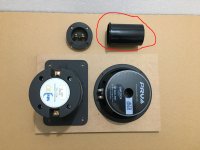
Also the here are some WinISD graphs of the little boxes for comparison between closed, ported etc., between the wanted port tuning for the midbass was ~60Hz a little bit lower as I normally do on my designs.
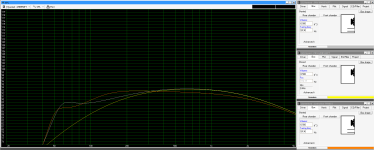
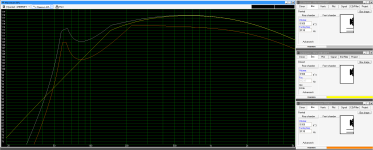
Also since the 6MB550FT has some excursion to spare and a nice motor, with some little EQ/DSP you can compensate for low extension when used alone.
Regards!

Also the here are some WinISD graphs of the little boxes for comparison between closed, ported etc., between the wanted port tuning for the midbass was ~60Hz a little bit lower as I normally do on my designs.


Also since the 6MB550FT has some excursion to spare and a nice motor, with some little EQ/DSP you can compensate for low extension when used alone.
Regards!
I see - Thanks @JRiv !
Yes, I also have a little bass presence bump (+1.5dB) on my 222L Bookshelf speakers, comparable in external size to yours, with H=370mm, W=250mm and D=280mm, with only 18mm thick panels.

The calculation results concerning the 222L are mentioned below in RED for the curves, and under the "Your Own Box" name for the specs :



The Tweeter is a classic silk dome model vs. your nice high efficiency horn, but the Woofer is just a bit larger with 170mm though :
high efficiency horn, but the Woofer is just a bit larger with 170mm though :


I also nearly completely stuffed the inside of the cab...

...With a channel going to the back of the Woofer :

For the crossover, I relied on a Serie 6dB/Oct. design :


T
Yes, I also have a little bass presence bump (+1.5dB) on my 222L Bookshelf speakers, comparable in external size to yours, with H=370mm, W=250mm and D=280mm, with only 18mm thick panels.
The calculation results concerning the 222L are mentioned below in RED for the curves, and under the "Your Own Box" name for the specs :
The Tweeter is a classic silk dome model vs. your nice
I also nearly completely stuffed the inside of the cab...
...With a channel going to the back of the Woofer :
For the crossover, I relied on a Serie 6dB/Oct. design :
T
Attachments
Hi @tubelectron, that's a really nice bookshelf build indeed with a nice low extension for their size, I also like the simplistic and well arranged first order series crossover, also and the graphs speaks for themselves. 
I was considering adding more denim/wool insulation on my boxes too but since they are a little bass-shy on purpose I guess will not make a noticeable difference, I'm currently testing my boxes in a 4-way configuration and crossed them at 100Hz/LR4 but definitely I can make them go down to around ~45Hz but with EQ/DSP.
Regards
I was considering adding more denim/wool insulation on my boxes too but since they are a little bass-shy on purpose I guess will not make a noticeable difference, I'm currently testing my boxes in a 4-way configuration and crossed them at 100Hz/LR4 but definitely I can make them go down to around ~45Hz but with EQ/DSP.

Regards
Last edited:
Hi @tubelectron, that's a really nice bookshelf build indeed with a nice low extension for their size, I also like the simplistic and well arranged first order series crossover, also and the graphs speaks for themselves.
I was considering adding more denim/wool insulation on my boxes too but since they are a little bass-shy on purpose I guess will not make a noticeable difference, I'm currently testing my boxes in a 4-way configuration and crossed them at 100Hz/LR4 but definitely I can make them go down to around ~45Hz but with EQ/DSP.
Thanks @JRiv !
About the 6dB/Oct. Serie Xover : this design is full of good surprises, giving a better job than its parallel counterpart... They should be strictly equivalent, but in practice, they're not ! It's not the first time that I experiment the superior results of that formula with success vs. the 6dB/Oct. parallel versions or 12dB/oct parallel configurations.
That said, I do not have real scientific / mathematic explanations to provide here, but the Serie 6dB/Oct. offers :
- better blend of the speakers at the transistion frequency.
- perfect in-phase work of the speakers, that are moreover connected in same polarity, meaning that the attack, decay, sustain, release are in the same sense, like the cone displacements.
- steeper slopes than 6dB/oct in practice : starting at 6dB/oct and then reaching 9 to 12dB/oct. as the cutoff frequency moves away.
- less dB insertion losses, higher dynamics and wider tone / image.
- no particular directivity lobes that changes the timbre when you vary your listening position.
Don't ask my why, it should make no difference with the 6dB/Oct. parallel configuration, but it's not the case and it is indisputably obvious - at the advantage of the Serie design - when we make stereo listening and instant mono A/B comparisions (with two speakers) my Audio friends and I (some are active crossover enthusiast like you !).
That said, it works - like for all low slope crossovers - if the speakers have enough crossover bandwidth to marry themselves, or in other words, no significant changes or accidents in their response quite largely up and down the crossover frequency. This is well documented by experts like Vance Dickason, Martin Colloms and John d'Appolito in their books : nothing new !
So it means indeed that there are cases where the Serie 6dB/Oct. design doesn't work ! I experienced this also, where tests discarded it at the profit of the classic 12dB/Oct. parallel arrangement : the criteria of linearity and coverage of the passbands between the loudspeakers mentioned above were not met.
About the quasi-full filling of the loudspeakers : it is not reserved only for sealed enclosures (even if some of them were totally damping material empty, like the Klipsch Heresy I...) and can be suitably used for BR designs, as also recommended by Dickason, Colloms and d'Appolito. Advantages :
- It increases the acoustic volume vs. the physical volume up to 40% in theory, but 20 to 30% of increase are easy to reach with suitable material (notably the Cotton wool). It means a few Hz won in the low frequency cut-off (2-3Hz are not uncommon).
- It attenuates so well the internal resonances that the LxWxD proportions ratio came largely secondary.
- It also avoid unwanted bass-midrange frequencies (due to a lack of filling) to go out of the cabinet via the port.
BUT in the BR design - it seems an evidence, yes, but I experienced it to see the result - the Woofer must not be "plugged" at the back, so he must have "an acoustic-free but not direct sighted" access tot the port, if I can say so. I mean : there must be no damping material closing the travel between the Woofer and the port, but some chicanes or bends in the route are recommended. Otherwise, the level in the bass range is decreased, but not the bass extension though.
A personal example on a quite wide encloure :
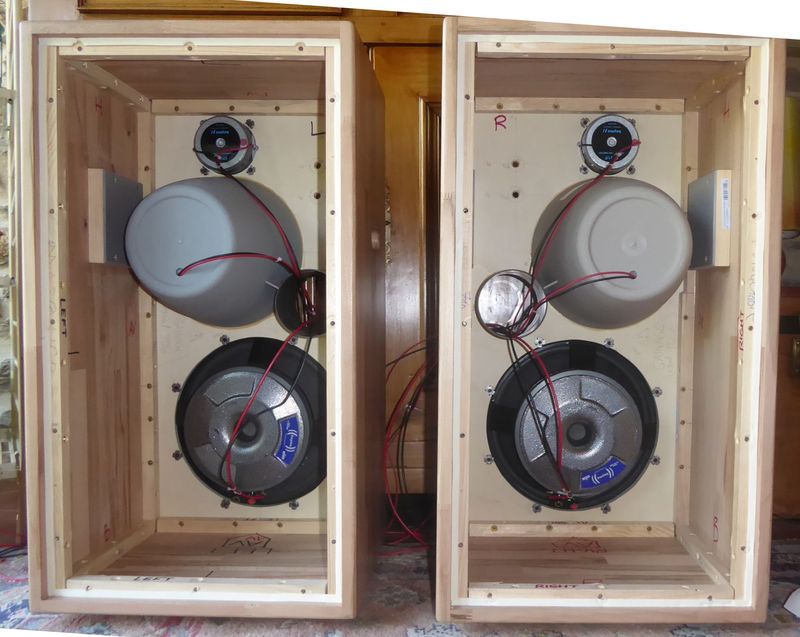
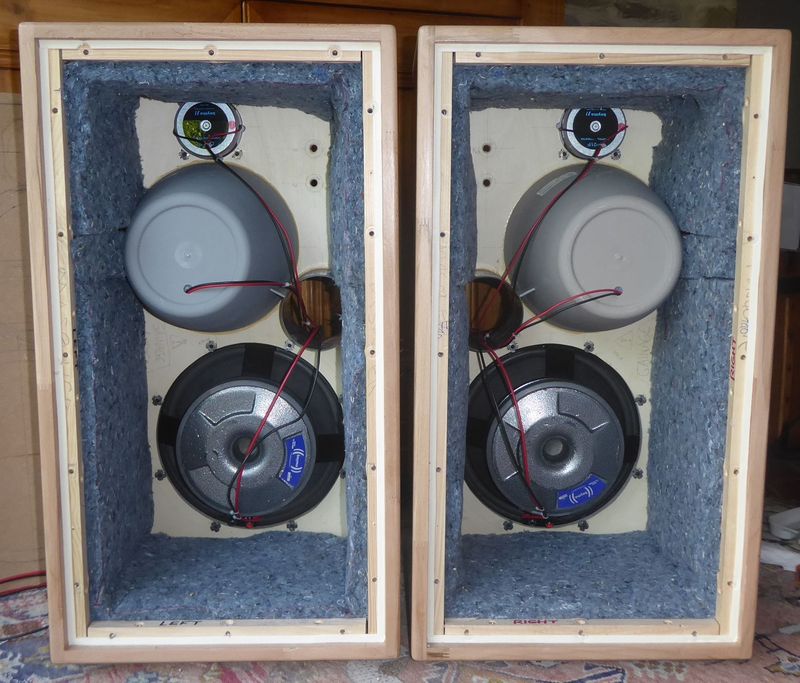
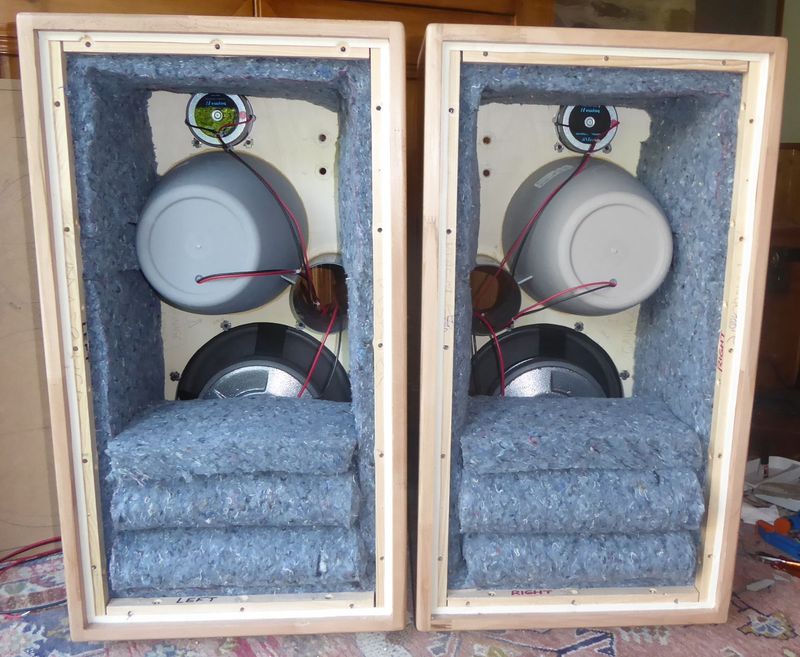
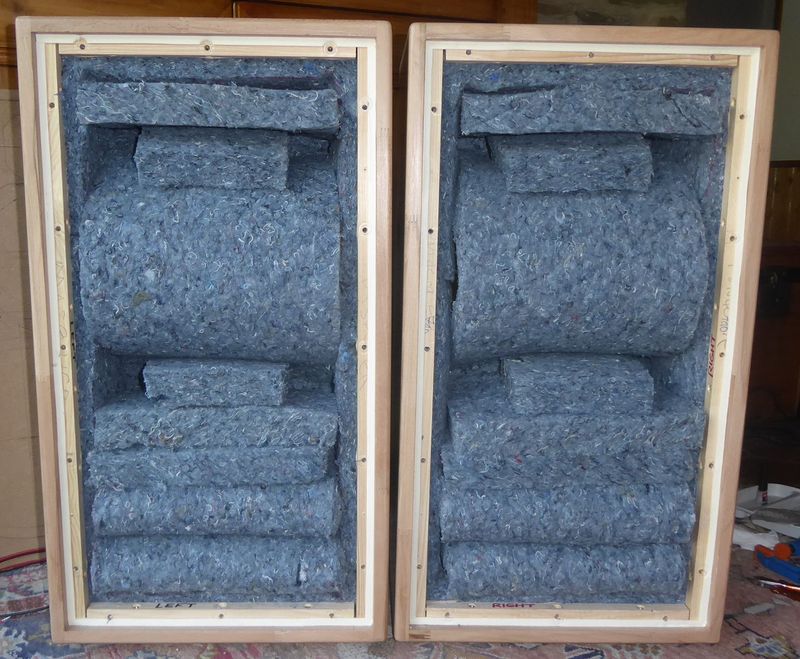
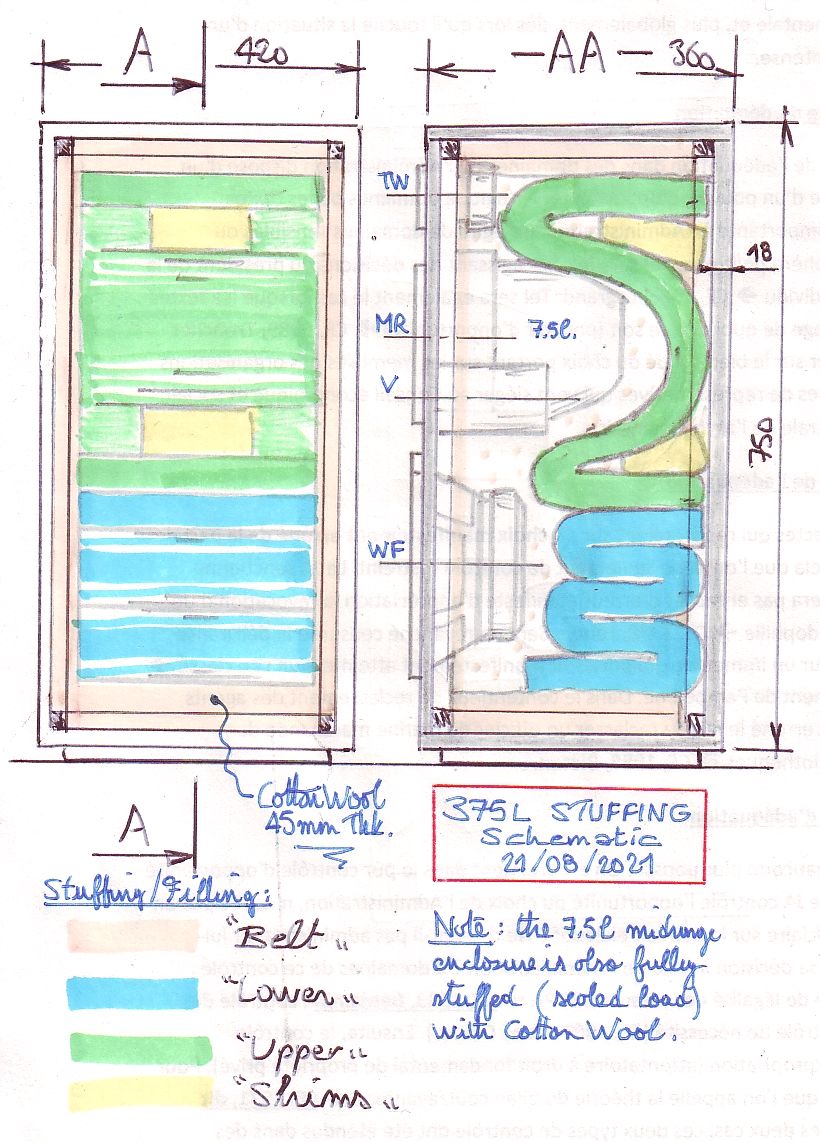
Well, that's my take on the subject, OK ?
T
Last edited:
Hi, you're right about the series crossovers having some advantages over the conventional parallel ones, there are several topics around the web which claiming for it, for example the notorious flatter response characteristics regardless of driver changes despite they are equivalents to parallel, on the other hand I've read that they lack some back EMF control but I guess it should be no problem in home audio with moderate power levels, but that's just my thought.
Between I just build a few parallel ones and some of them independent high/low crossover boards which also limits it to parallel, like in modular speaker systems unless the crossovers are outboard, however I think that regardless of passive crossover type the drivers have to be carefully chosen with the flatter impedance as possible to minimize the response variations but apparently this is not the case with series crossovers, though I chose the HF10AK over the D280-Ti after some listening sections as it seems the Faital CD behaves quite well with the passive crossover.
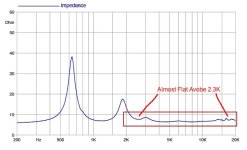
Also very nice 3-Way speakers with those Beyma Pro drivers and interesting the lot of wool insulation and layout, I guess I could try on my ~47Hz tuned 2-Way 10" towers in which currently uses a combination of thin denim/wool with additional polyfill insulation, now I'm using them as bass bins since testing the bookshelf speakers in an Active/Passive hybrid 4-Way setup.
and interesting the lot of wool insulation and layout, I guess I could try on my ~47Hz tuned 2-Way 10" towers in which currently uses a combination of thin denim/wool with additional polyfill insulation, now I'm using them as bass bins since testing the bookshelf speakers in an Active/Passive hybrid 4-Way setup.
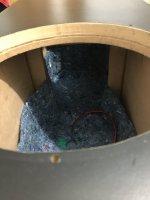
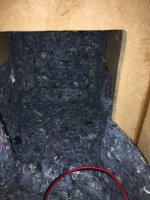
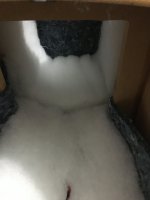
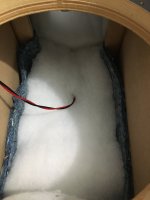
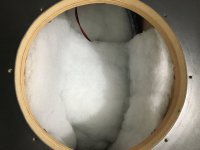
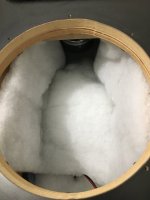
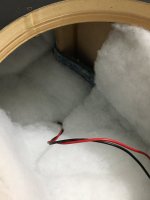
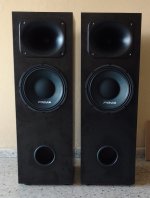
PS Surprisingly the passive bookshelf on top of my active towers have way better imaging, this is because I can toe-in the little speakers and I get that nice in-your-face wide center/phantom imaging, unfortunately I can't get that nice imaging with my towers due to room space constraint limiting me from the ideal listening position.
wide center/phantom imaging, unfortunately I can't get that nice imaging with my towers due to room space constraint limiting me from the ideal listening position.
Regards
Between I just build a few parallel ones and some of them independent high/low crossover boards which also limits it to parallel, like in modular speaker systems unless the crossovers are outboard, however I think that regardless of passive crossover type the drivers have to be carefully chosen with the flatter impedance as possible to minimize the response variations but apparently this is not the case with series crossovers, though I chose the HF10AK over the D280-Ti after some listening sections as it seems the Faital CD behaves quite well with the passive crossover.

Also very nice 3-Way speakers with those Beyma Pro drivers









PS Surprisingly the passive bookshelf on top of my active towers have way better imaging, this is because I can toe-in the little speakers and I get that nice in-your-face
 wide center/phantom imaging, unfortunately I can't get that nice imaging with my towers due to room space constraint limiting me from the ideal listening position.
wide center/phantom imaging, unfortunately I can't get that nice imaging with my towers due to room space constraint limiting me from the ideal listening position.Regards
Hi, you're right about the series crossovers having some advantages over the conventional parallel ones, there are several topics around the web which claiming for it, for example the notorious flatter response characteristics regardless of driver changes despite they are equivalents to parallel, on the other hand I've read that they lack some back EMF control but I guess it should be no problem in home audio with moderate power levels, but that's just my thought.
That's true also - we probably found the same sources of informations...
Yes. Back EMF is not that important for us, as we usually listen at moderate power levels (a mere dozen of watts at the worse - for me at least !) and the damping factor of the amp is high enough (over 10 easily).
Between I just build a few parallel ones and some of them independent high/low crossover boards which also limits it to parallel, like in modular speaker systems unless the crossovers are outboard, however I think that regardless of passive crossover type the drivers have to be carefully chosen with the flatter impedance as possible to minimize the response variations but apparently this is not the case with series crossovers, though I chose the HF10AK over the D280-Ti after some listening sections as it seems the Faital CD behaves quite well with the passive crossover.

This is a fine result. That HF10AK is an interesting item, indeed...
PS Surprisingly the passive bookshelf on top of my active towers have way better imaging, this is because I can toe-in the little speakers and I get that nice in-your-facewide center/phantom imaging, unfortunately I can't get that nice imaging with my towers due to room space constraint limiting me from the ideal listening position.
Yes. I slightly tilt some of my speakers (below) with 8° riser bases for that reason :
I never ventured in the Tower enclosure design - for cabinet stability reasons (stupidly) - but I should ! Is this also a Faital series of speakers in your 2- way speakers ?
T
Finding suitable software - such a lot it's hard to know which to go for. I like the look of your design results could you tell me what package it is. Sorry to butt in etc.Your Own Box" name for the specs :
Finding suitable software - such a lot it's hard to know which to go for. I like the look of your design results could you tell me what package it is. Sorry to butt in etc.
Not sure to understand what uou mean by package, but the software I use is online :
https://www.micka.de/en/index.php
I wanted to contact the designer to simply thank him for his premium work offered to us, but no possible contact, unfortunately...
T
Fortunately I've had great stability on my enclosures since I always make them internally fully closed/sealed(glued and screwed) except for the driver/port holes of course, and some times I overbuild them at the cost of the extra mass/weight added.
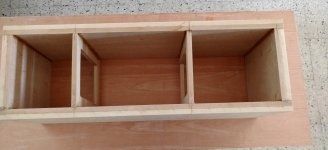
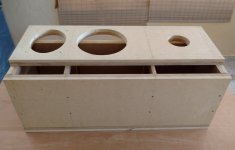
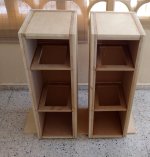
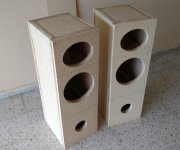
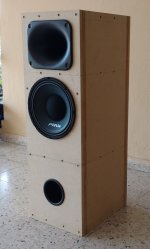
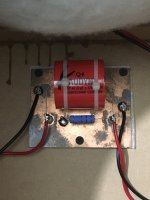
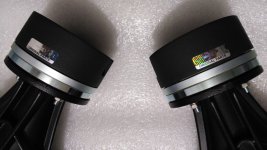
Here is the build log of my 10" 2-Way towers showing my construction habits, though mostly with hand tools/power tools since I don't have a CNC unfortunately, also I'm not good at terminations nor painting hence is easier for me to make just an old-fashioned box and apply some laminate of choice.
Also yes the 2-Way towers have a pair of Faital HF10AK mated to Faital LTH102 elliptical tractrix horns, since the towers are fully active I've added a large cap for possible DC/transient protection just in case my old-school amplifiers misbehaves.
Here is a quick paint draw of the current testing setup, I call it an active/passive 4-Way hybrid setup , between I have another spare Samson S2000 and an electronic crossover so I can go fully 4-Way active but again the passive little speakers are sounding so great that will not bother making them actively any time soon.
, between I have another spare Samson S2000 and an electronic crossover so I can go fully 4-Way active but again the passive little speakers are sounding so great that will not bother making them actively any time soon.
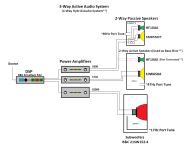
Regards







Here is the build log of my 10" 2-Way towers showing my construction habits, though mostly with hand tools/power tools since I don't have a CNC unfortunately, also I'm not good at terminations nor painting hence is easier for me to make just an old-fashioned box and apply some laminate of choice.
Also yes the 2-Way towers have a pair of Faital HF10AK mated to Faital LTH102 elliptical tractrix horns, since the towers are fully active I've added a large cap for possible DC/transient protection just in case my old-school amplifiers misbehaves.
Here is a quick paint draw of the current testing setup, I call it an active/passive 4-Way hybrid setup
 , between I have another spare Samson S2000 and an electronic crossover so I can go fully 4-Way active but again the passive little speakers are sounding so great that will not bother making them actively any time soon.
, between I have another spare Samson S2000 and an electronic crossover so I can go fully 4-Way active but again the passive little speakers are sounding so great that will not bother making them actively any time soon.
Regards
Hey @JRiv : the speakers you choose for your little Bookshelf enclosure are serious ones - not cheap ! Nothing to do with the "popular" Monacor units I used for mine... 



Yes, with a free-air resonance at 85Hz and a Qts at 0.34, I understand now that the 6MB550FT installed in your small enclosure have to be helped by a sub in the infra-bass department :

Here are the results, taking the informations you provided for your box and the T/S parameters of the Woofer :



Did you tested a quasi full-filling on it ? It may provide additional damping in the bass-midrange area to your system which could be welcome - if necessary, OK ? Your ears only can tell ! We all know that measurements and simulations are first of all indications.
Indeed, the results shows a n=Vb/(Vas.Qts²)=16.8, that is to say a rather underdamped BR (critical damping value is n=5.7), hence the matching undulating Step Response and the elevated peak Group Delay (curves in red).
T
Yes, with a free-air resonance at 85Hz and a Qts at 0.34, I understand now that the 6MB550FT installed in your small enclosure have to be helped by a sub in the infra-bass department :
Here are the results, taking the informations you provided for your box and the T/S parameters of the Woofer :
Did you tested a quasi full-filling on it ? It may provide additional damping in the bass-midrange area to your system which could be welcome - if necessary, OK ? Your ears only can tell ! We all know that measurements and simulations are first of all indications.
Indeed, the results shows a n=Vb/(Vas.Qts²)=16.8, that is to say a rather underdamped BR (critical damping value is n=5.7), hence the matching undulating Step Response and the elevated peak Group Delay (curves in red).
T
Hey @JRiv : the speakers you choose for your little Bookshelf enclosure are serious ones - not cheap ! Nothing to do with the "popular" Monacor units I used for mine...
Hi @tubelectron, yeah those Faital CD's and horns are a little bit more expensive here in the US plus the shipping/taxes 😐 , but that compression driver including the Faital HF108 worth every penny, just hope the prices drops or at least stays so I could try a pair of the Faital HF108 which have flatter impedance from 950Hz and up and a bit linear FR.
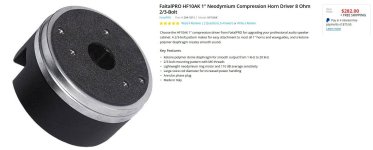
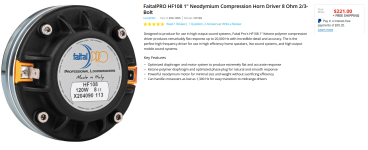
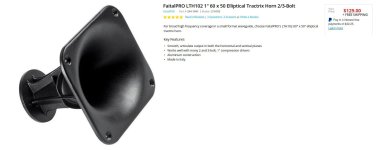
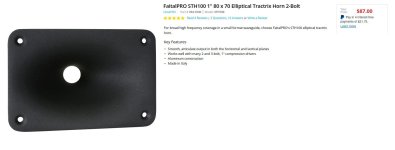
Did you tested a quasi full-filling on it ? It may provide additional damping in the bass-midrange area to your system which could be welcome - if necessary, OK ? Your ears only can tell ! We all know that measurements and simulations are first of all indications.
I haven't tested yet the quasi full-filling as my local fabric and accessories store does not have the thick wool like shown on your 3-Way speakers unfortunately, so had to find a good deal online without the common killer shipping charge to my location, also I saw that online enclosure calculation previously but just used the well known old WinISD Pro Alpha but indeed they have pretty much similar box predictions so far, here are few WinISD predicitons of my little boxes:
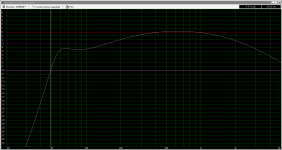
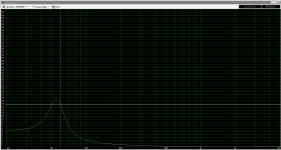
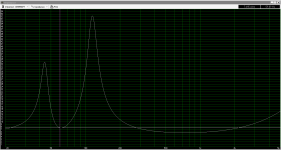
Between like @Guerilla said, it would be nice a thread about your "quasi full-filling" approach to see the comments of the experienced users in this regard, including some REW measurements of the response differences from an empty, semi and almost full-filling.
The Loudspeaker CookBook from Vance Dickason has documented chapters about the subject :
I don't know if you have this book @JRiv and @Guerilla, but if not : buy it ! it is worth every penny... So are those of Martin Colloms (High Performance Loudspeakers) and Joseph d'Appolito (Testing Loudspeakers).
T
- damping material quality, quantity and placement.
- port position, size and number.
I don't know if you have this book @JRiv and @Guerilla, but if not : buy it ! it is worth every penny... So are those of Martin Colloms (High Performance Loudspeakers) and Joseph d'Appolito (Testing Loudspeakers).
T
- Home
- Loudspeakers
- Multi-Way
- Yet another efficient bookshelf speakers build!
